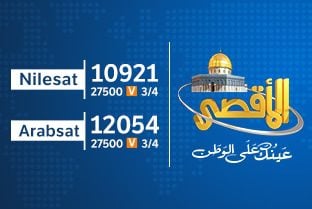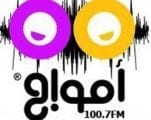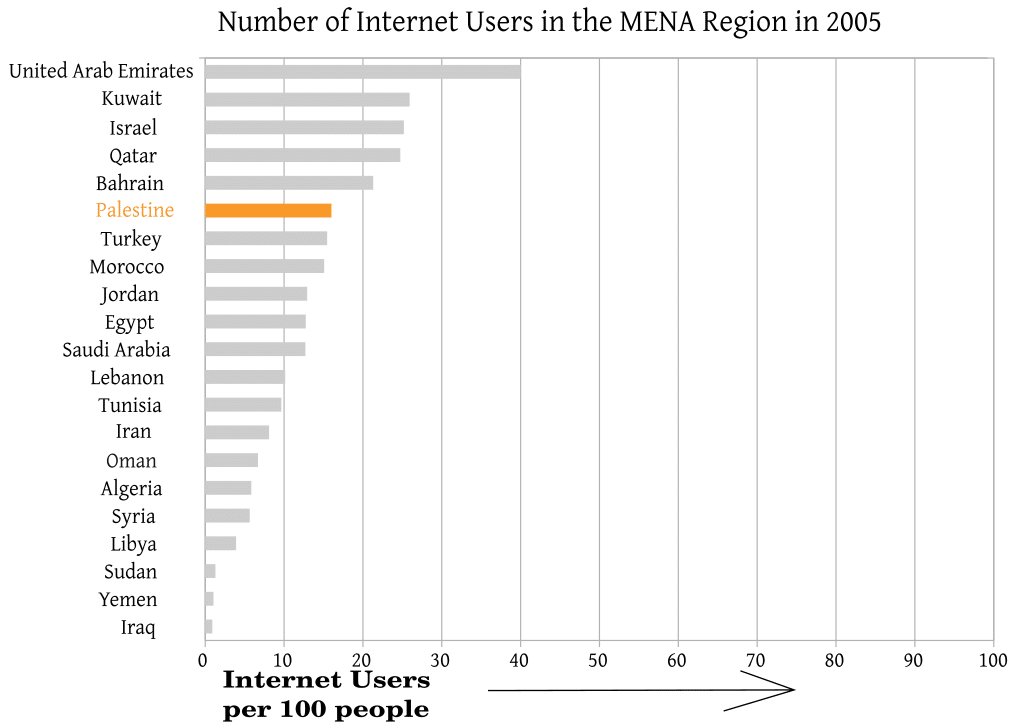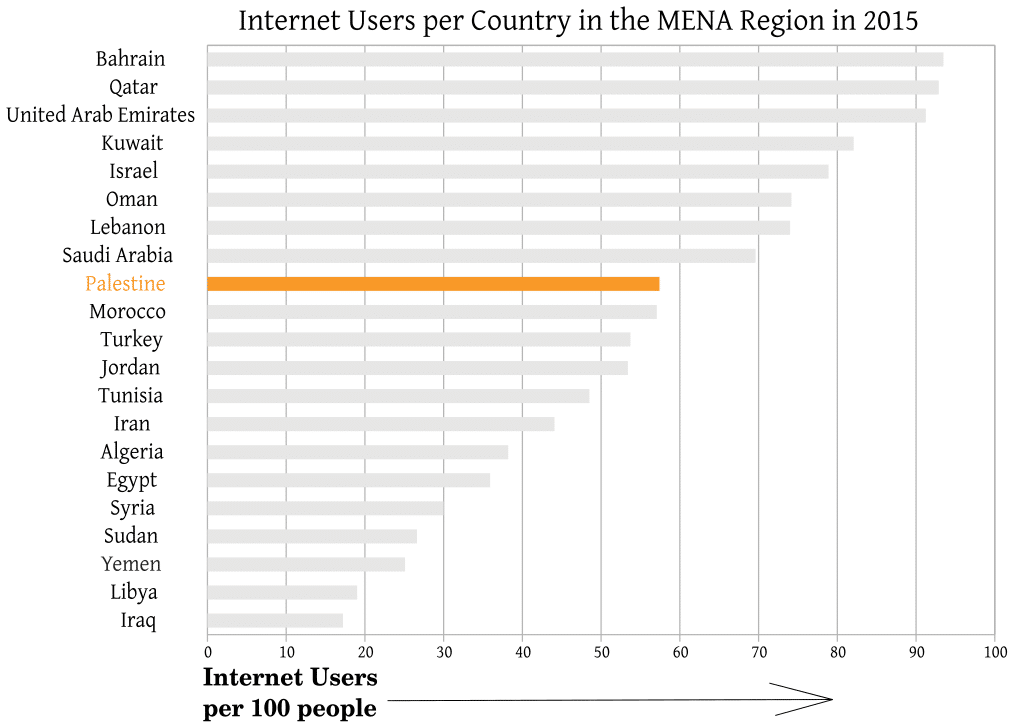
Introduction
Palestine can trace its mass media roots back to the Ottoman era (1876-1914), with Ottoman rulers publishing a newspaper in Jerusalem in 1876. However, the first newspaper owned by Palestinians themselves was Filastin, founded in 1911 by the cousins Issa and Daoud el-Issa. The newspaper was a prominent early expression of Palestinian national identity and was closed down firstly by the Ottomans and then again briefly during the British Mandate for Palestine. British rulers tolerated private newspapers but also imposed the 1933 Publications Law, allowing for the closure of press outlets that might endanger public order, and in 1945, further legislation permitted direct censorship.
In 1936, Palestine’s first radio service was introduced, broadcasting in Arabic from Jerusalem and largely propagandizing the British Mandate’s agenda. By the 1950s, there were four Palestinian newspapers operating in the West Bank, by this time annexed by Jordan – Filastin, al-Manar, al-Difaa and al-Jihad (the latter two merged in 1951 to become al-Quds). These were subject to restrictive Jordanian press regulations that banned content deemed threatening to the unity or security of the Jordanian state. Meanwhile, in the Gaza Strip, several newspapers were established under the Egyptian administration, including al-Tahrir in 1958.
Two Arabic-language newspapers were also published to cater for the Palestinian population in Israel, with al-Ittihad founded in 1944 and al-Yawm in 1948. Following the 1967 Six Day War, Palestinian newspapers in the West Bank and Gaza were closed down, although al-Ittihad and al-Yawn continued to publish. In 1968, Palestinian Mahmoud Abu Zalaf managed to secure an Israeli license to re-publish al-Quds in East Jerusalem. This set the stage for a series of Palestinian daily and weekly newspapers to be published from Jerusalem over the next two decades. In 1972, the PLO launched Radio Palestine, based in Cairo, yet domestic audiovisual broadcasting did not emerge until the 1990s, as the Israeli authorities continued to deny any Palestinian publication, radio station or television channel to operate outside of Jerusalem until the 1993 Oslo Accords.
Following the Oslo Accords a new surge of newspapers began publishing across Palestine, in accordance with the 1995 Press Law. The Palestinian Broadcasting Corporation (PBC) was established in 1994, and radio programming went on air from Jericho in the same year. Television broadcasts began in 1996, and by the early 2000s, the PBC administered two terrestrial channels and a satellite station. The media environment continued to grow in the 21st century. By 2010, there were 31 private television channels and 70 radio stations in the West Bank and Gaza.
The internet was first introduced in Palestine in 1996, however infrastructure equipment must pass through Israel, which has been accused of deliberately limiting bandwidth and connection speeds. Nevertheless, internet penetration is relatively high and online outlets now form an important part of the Palestinian media landscape.
Freedom of Expression
The Palestinian Basic Law, established in 2002, guarantees freedom of expression and a free press, and outlaws censorship. However, this law is often usurped by other legislation such as the 1995 Press and Publications Law that stipulates published content must not damage national unity or contravene national morals. Moreover, the Palestinian media environment is not conducive to freedom of expression.
It is dominated by partisan reporting and undue influence from the Palestinian Authority (PA) and Hamas, in addition to external interference from Israel. It is ranked 132nd in Reporters Without Borders’ 2016 World Press Freedom Index.
Both in the West Bank and Gaza, ruling authorities maintain close control over the content that is produced. The PA is responsible for administering television and radio licenses in the West Bank, and has a longstanding history of closing down stations that it has deemed ‘critical of the Palestinian leadership’. Defamation also remains a criminal offence, with media figures routinely prosecuted. Hamas has introduced a registration system in Gaza that requires all journalists and broadcasters to undergo accreditation before operating.
The Israeli military is also able to regulate Palestine’s media output by enacting anti-incitement procedures against outspoken journalists. AFP estimates that the Israel Defense Forces (IDF) closed down six Palestinian radio and television outlets between October 2015 and October 2016.
The Ramallah-based Palestinian Center for Development and Media Freedoms (MADA) annually reports on the number of ‘press freedom violations’ committed in Palestine. In the first half of 2016, MADA monitored 198 media violations, 67 per cent of which were perpetrated by Israel. Of the remaining violations, 66 per cent were committed by the PA and 34 per cent by Hamas.
Israel’s violations include the ‘administrative detention’ of 26 Palestinian journalists, many of whom are being held without formal charges. The IDF also prevented media coverage of protests near the Israeli West Bank barrier by annexing the area as a ‘military zone’. The PA also actively obstructs the coverage of protests. In March 2017, security forces beat journalists reporting on an anti-Israel demonstration in Ramallah. In Gaza, Human Rights Watch reported that Hamas unlawfully detained an activist in 2016 after he criticized the government, as well as two journalists who had reported on instances of poverty and medical failings in the area.
Journalists, activists and bloggers operating online are also subject to constant monitoring and intimidation. Israel has a dedicated unit monitoring Palestinian social media posts. In March 2016 alone, 148 Palestinians were arrested by Israeli forces for ‘inciting violence on Facebook’. Later in the same year, the PA temporarily imprisoned student Kifah Quzmar after he labelled the ruling authorities ‘rotten’ in a Facebook post.
Television
Television is the most popular news medium in Palestine, however the majority of viewers opt for pan-Arab broadcasting, predominantly from the Gulf states, at the expense of domestic channels. A 2010 survey conducted by Near East Consulting concluded that the most watched television channels in Palestine were al-Jazeera (31 per cent), Palestine TV (18 per cent), MBC (18 per cent), al-Arabiya (7.5 per cent) and Abu Dhabi TV (5 per cent).
Domestic channels are dominated by partisan affiliation. Between 2007 and 2014, Hamas prevented all PBC operations in Gaza, while the PA closed down Hamas-affiliated broadcast offices in the West Bank. The most significant domestic broadcasters are as follows:
Palestine TV (PTV) – Flagship channel operated by PBC in Ramallah. It began broadcasting in 1996 and airs a mixture of news and entertainment content. The PBC’s headquarters were destroyed by Israeli air strikes in 2002, but otherwise the channel has continued without interruption. PTV broadcasts are generally favourable toward the PA. However, the channel has criticized the organization in the past, leading to intervention by the ruling authorities. In 2011, PTV aired the satirical show Watan ala Watar during Ramadan, which criticized governing officials and corruption. The show was ultimately ordered off air by the Palestinian attorney general. PBC also operates the Palestinian Satellite Channel, first broadcast in 1999, which airs content targeting the Palestinian diaspora worldwide.

Al-Aqsa TV. Photo Flickr
Al-Aqsa TV – Satellite station launched in 2006 in Gaza as the official Hamas-affiliated channel. Like PTV, it airs news coverage, entertainment and religious programming but strictly from a Hamas political perspective. The work of the station and its employees has been hampered considerably by conflict in the region. The channel’s headquarters were destroyed by Israeli air strikes during the 2008 Israel-Gaza War, and its offices were once again targeted in 2014. In 2012, al-Aqsa cameraman Mahmoud al-Koumi and photographer Hussam Salameh were killed by air strikes. In 2008, Hamas established its second satellite channel, al-Quds TV.
Radio
There are dozens of radio stations in Palestine, but the most popular are affiliated with the PA and Hamas. Private stations with a more independent slant also operate, mostly in the West Bank. The most significant are as follows:
The Voice of Palestine – PBC-operated radio station based in Ramallah. It was established in 1998 and provides a diverse mixture of programming including music, news bulletins and cultural stories. The station was temporarily forced off air in 2002, after the PBC offices were destroyed by an air strike.
Al-Aqsa Voice – Hamas launched al-Aqsa Voice in 2003 and began streaming online the following year in an effort to reach the Palestinian diaspora. The radio station represented the starting point for Hamas’ media broadcasting in the region.

Radio Amwaj – Established in the West Bank in 1995, Radio Amwaj was the most prominent station in the territories until its equipment was extensively damaged by Israeli attacks in 2002, causing the station to temporarily re-transmit Voice of Palestine content.
Ajyal Radio – Founded in Ramallah in 2001, Ajyal Radio is a private station with close ties to the PA. It airs news programming alongside music.
Radio Bethlehem 2000 – News and current affairs station established in 2000 that airs bulletins in Arabic and English.
Press
The most popular newspapers in Palestine are either operated by or closely affiliated with the PA or Hamas, reflecting the wider media environment. Between 2007 and 2014, the distribution of the pro-Hamas Felasteen and al-Resaleh was prohibited in the West Bank, and the circulation of al-Quds, a-Ayyam and al-Hayat al-Jadida was banned in Gaza. The 2014 al-Shate Agreement between Fatah and Hamas eventually removed these restrictions. The most significant publications are as follows:
Al-Quds – Established in 1951 in East Jerusalem following the merger of two smaller newspapers, the family-owned al-Quds is the oldest active Palestinian publication by a considerable distance. Due to the location of its headquarters, the newspaper is subject to Israeli censorship legislation. It is considered to be the most widely read Palestinian newspaper, and the least influenced by the heavily partisan media environment.
Al-Ayyam – Launched in 1995 as the first private Palestinian newspaper following the Oslo Accords. However, despite its claims of independence, the PA owns shares in the publication, and its editor-in-chief, Akram Haniyeh, was a long-term advisor to the late PA leader Yasser Arafat.
Al-Hayat al-Jadida – Founded by the PA in 1995 as its official newspaper. Despite its ownership, the newspaper has in the past criticized the PA’s domestic policies and reported on instances of corruption.

Felasteen – Established in 2007 in Gaza. The newspaper officially identifies itself as ‘independent’ but it has strong ties to Hamas.
Al-Resaleh – Founded in 1996 as a daily newspaper, al-Resaleh has been published bi-weekly in Gaza since 2006. It serves as a mouthpiece for Hamas and often carries official statements from high-profile officials.
Online Publications
In the West Bank, websites are not officially censored but online publications can be shut down by the security authorities if they are believed to have violated Palestinian laws. The most striking example of this came in April 2012, when the PA closed eight news websites including the popular Amad Media, Firas Press, Filistin Beitna and Milad, after they published stories critical of President Mahmoud Abbas. The closures sparked outrage and protests and ultimately led to the resignation of the PA minister of communications, and all eight websites were reinstated by May 2012.
In Gaza, the Hamas minister of communications has stated that online publications or blogs are tolerated but “should not break the law”, and the online environment is generally more restrictive than in the West Bank.
However, the internet has provided an opportunity for Palestinian news outlets to operate with a greater degree of independence from the influence of the ruling authorities. The Maan News Agency, established in 2005 by the Maan Network Bethlehem with a second office in Gaza, is a notable case study. The agency is run by Raed Othman and was founded to provide a more independent take on Palestinian politics and current affairs. As a result, it has fallen foul of the PA and Hamas on several occasions, most recently in 2013, when Hamas seized its Gaza office for four months on charges of ‘fabricating news’. The Maan Network also operates a television channel and radio station.






Social Media
Social media is becoming increasingly important as a platform for Palestinians to access news and contribute their own footage and stories. Facebook, Twitter and YouTube have been used extensively by Palestinians since the 2006 Gaza blockade to upload footage of Israeli attacks. The case of Farah Baker, who, aged 16, live-tweeted the 2014 Israeli attacks of Gaza to over 200,000 followers, is one the most notable examples.
Social media has also been harnessed by the Palestinian ruling authorities, with Hamas releasing a series of professionally edited YouTube videos in the run up to the 2016 municipal elections, alongside a ‘thank you, Hamas’ hashtag campaign on Twitter. Pro-Fatah activists responded by hijacking the hashtag campaign, ironically juxtaposing the phrase ‘thank you, Hamas’ alongside images and footage of Israeli air strikes.